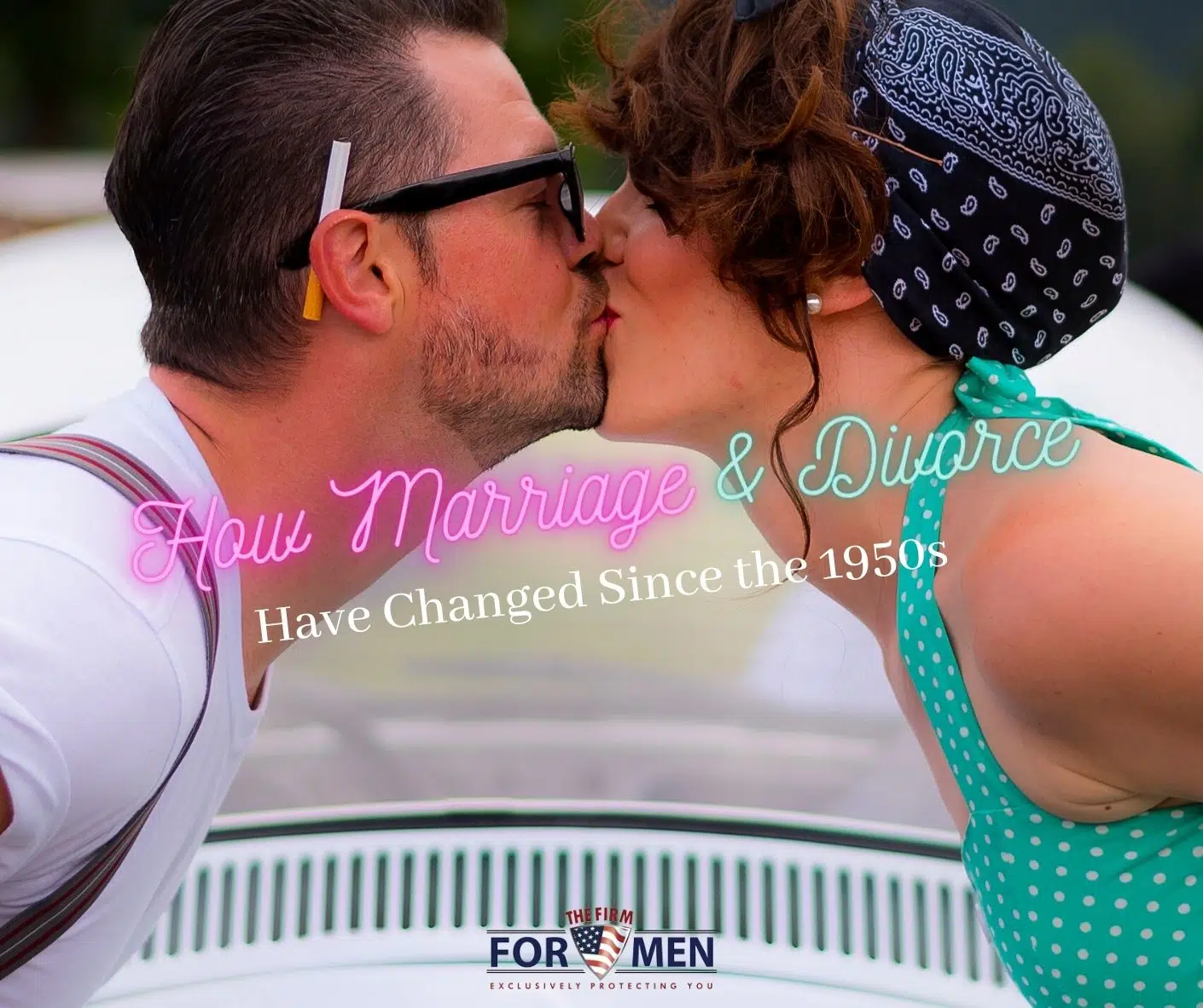Ah, the 1950s! TV dinners, Disneyland, Rock and Roll; all the wonders of a postwar America sprang from a booming economy. Of course, rampant racism, the Korean War, sexism, the Cold War, and one-piece women’s bathing suits were part of the decade, too. Let’s take a look at evolving trends in marriage and divorce from the 1950s onward.
Jump to a Section
The Marriage Rate in The 1950s
We all loved lucy. Lucille Ball’s groundbreaking sitcom, “I Love Lucy,” started in October, 1951 and featured a strong female lead who was a married American woman. The proportion of American women who were married in 1950 was an astounding 65 percent, according to the National Center for Family and Marriage Research (NCFMR).
The marriage rate (the number of marriages per 1,000 people) in 1950 was 90.2, which compares to:
- 1960: 73.5
- 1970: 76.5
- 1980: 60.1
- 1990: 50.5
- 2000: 45.2
- 2010: 31.1
While the marriage rate in America is plummeting, divorce in the 1950s was, remarkably, about as common as divorce is today, according to Insider.com:
- The 1950 divorce rate (the number of divorces per 1,000 people) was 2.5
- The 1955 divorce rate was 2.3
- The 1958 divorce rate was 2.1
- The 2021 divorce rate was 2.9
America’s postwar fervor to elevate our society above our avowed enemy—the USSR and its “evils of Communism”—led to the creation of strong, nuclear families dedicated to the American Way of Life. The results:
- Marrying younger
- Having more children
- Divorcing less (the 1947 divorce rate was 3.4 per 1,000)
First Marriage Age
The NCFMR also tracks the age of first marriage, a touchpoint that has changed significantly since the 1950s.
- In the mid 1950s through the 1960s, the median age at first marriage was just over 20 for women and 22 for men
- In the 1970s, an upward trend began that, in 2018, saw the median age at first marriage at almost 28 for women and nearing 30 for men
Part of the reason for this trend is that more women over the past 70 years have opted never to marry, from around 17 percent in 1960 to around 31 percent in 2016.
Laws Change
Marriage and divorce are inextricably wound into other threads of America’s cultural quilt. Economics, civil rights, human rights; they all touch the institutions of marriage and divorce.
Being able to love and marry whomever you wish has certainly changed life for many Americans. Consider the steady drumbeat of passage of significant Virginia and national laws broadening human rights for all of us:
- 1632—Virginia’s first marriage laws are passed
- 1803—Virginia allows divorce through the legislature
- 1848—The Married Women’s Property Act allowed all (white) American women to own property, including land
- 1850—Virginia transfers responsibility for divorce oversight to Virginia’s courts of chancery
- December 6, 1865—Slavery is outlawed throughout the United States, allowing women of color to own property
- June 4, 1919—Congress gives women the right to vote
- 1960—Virginia legalizes no-fault divorce
- June 12, 1967—Virginia legalizes interracial marriage
- October 2, 2014—Virginia legalizes same-sex marriage
Introducing no-fault divorce into Virginia state law opened new horizons to couples who wanted to end their relationships without casting blame. Today, Virginia’s men and women can marry and divorce whomever they please, for just about any reason.
Marriage Quality
With the surge in divorces from 1960 through 1980, the quality of marriage itself took a hit. According to National Affairs:
- In the early 1970s, 70 percent of married men reported being very happy in their marriages
- In the same time period, 67 percent of married women reported being very happy in their marriages
- Men’s marital happiness hovered around 63 percent from the early 1980s to the mid-2000s
- Women’s marital happiness fell from 62 percent in the early 1980s to 60 percent in the mid-2000s
For the Children
National Affairs says some 20 percent of America’s children today are born to cohabitating, not married, couples. This is a skyrocketing increase trending upwards with the rise of cohabitation:
- In 1960, roughly 440,000 couples lived together but out of wedlock
- In 2006, that number swelled to more than 6.4 million
Most children born of cohabitating couples, says the magazine, will see their parents break up before the children turn 15. Looser relationships—including single-parent households, cohabiting couples, and divorced parents—tend to correlate to the lower levels of socio-economic strata, says National Affairs.
This means divorce and cohabitation are increasingly becoming demarcations between rich and poor; between well-educated and poorly educated; and between successful and struggling Virginians.
Attorney Power
A family law attorney in Virginia is center-stage in affecting constructive change to improve everyone’s lives. Through creative, thoughtful actions to help both parties in separation and divorce proceedings, a Virginia family law attorney can help to strengthen the bonds of matrimony, the equity of divorce, and the happiness of Virginia’s children.
The Firm For Men believes in the sanctity of marriage and divorce as institutions to help people live their best lives. Virginia’s men have a strong ally in our team of family law attorneys. Contact us today to allow us to help you preserve your rights, your future happiness, and your financial strength.

